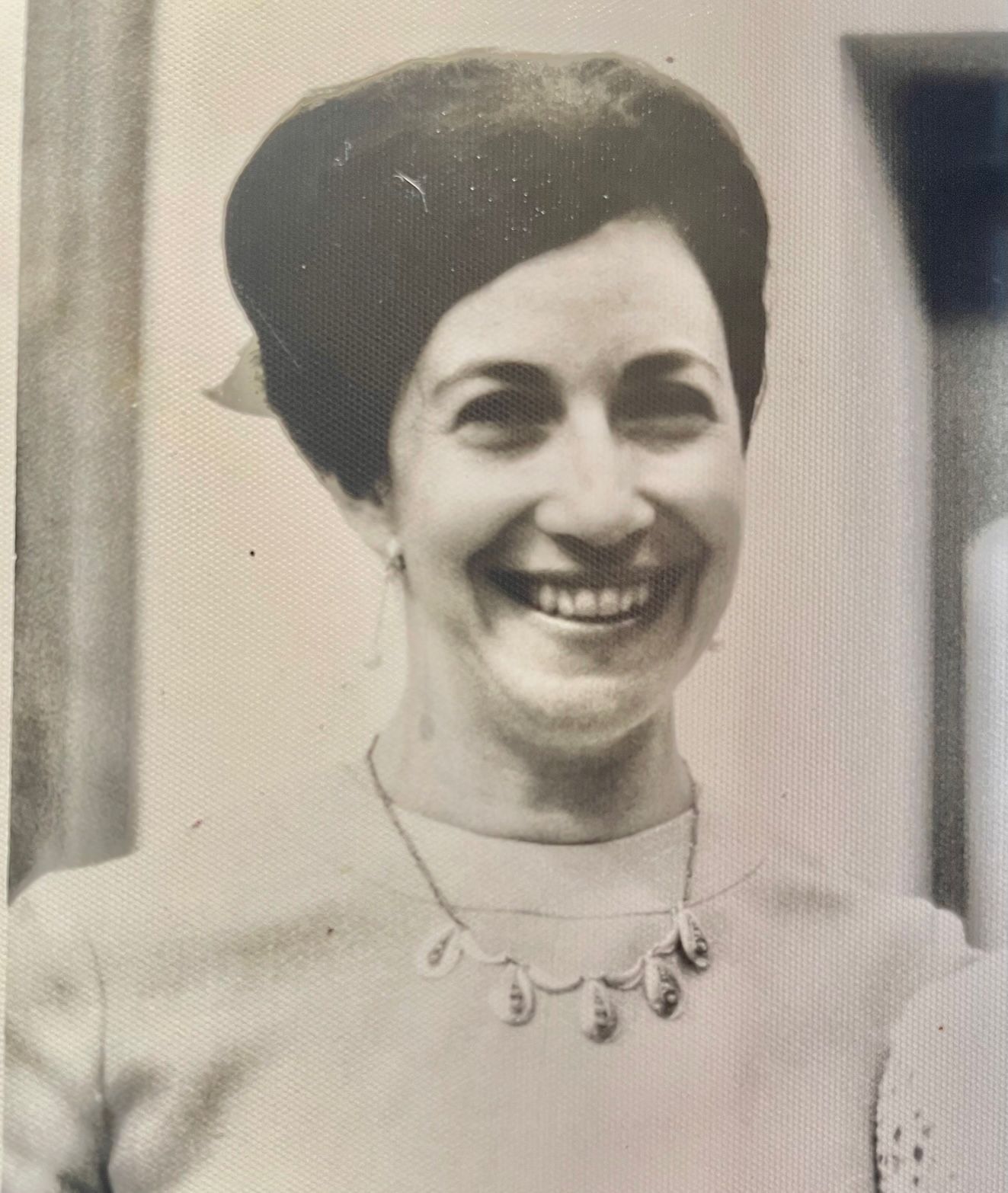
During Gene’s two year-long sabbaticals—to Israel in 1962 and Denmark in 1969--Sonya’s friendships with leading artists influenced her emerging visual aesthetic and passion for design. She did not begin to paint, however, until her early-forties, not long before losing Gene suddenly to an inoperable brain tumor. Following his death in 1976, Sonya’s early artwork with mixed media became an important outlet for her grief.
After marrying philosophy professor Dwight Van de Vate, moving to Knoxville, and becoming step-mother to his three, Sonya entered a period of extraordinary productivity—which continued through her marriage of fourteen years. At age fifty-nine, on her own for the first time in her adult life, she established herself in a large apartment with a dream art studio.
Sonya’s work was first inspired the late artist Carol Minarick, a dear friend and mentor. Sonya’s keen appreciation for life as art was shaped by her studies in Expressive Art Therapy. Her thesis paper, “Discerning the Colors and Shapes of Change: A Work in Process,” captured the dominant themes of her belief in the power of making art as an essential form of healing and transformation.
Over the last thirty years, Sonya Eichler generated a large and beautiful body of work, distinguished by her striking use of watercolors. These include abstracts, childhood narrative memory pieces, and her series of full-sized portraits of Persian carpets. Sonya’s work has garnered several prizes from juried shows at the Oak Ridge Arts Center and elsewhere.
Sonya’s creative gifts were passed down to her three children and three step-children, their significant others, and her grandchildren—including her beloved grandson, the late Elan Eichler, a rapper/poet and artist, son of Dan and Karen Oster Eichler, who preceded Sonya in death.
Sonya passed away on December 15, 2024 at the age of 92. She was listening to Bach, her favorite composer, and a nurse who knew the words to one of her songs suggested that she rest and “count the leaves.”
The rugs I did not weave, the gardens I did not plant, the stories I did not write, the songs I did not sing, the confessions I did not omit.
Sonya Eichler Circa 1980, watercolor doodle of a carpet with words
Sonya Katherine Geffen was born in St. Louis, Missouri on September 11, 1932—the second in a lineage of four gifted children. Her mother Julia played piano and her father Igor was a cellist and conductor who founded the Little Symphony in St. Louis. At a young age, Sonya began the training that led her toward becoming a highly accomplished pianist, classical composer, songwriter, and music teacher/mentor.
In the mid-1950s, Sonya and her late husband, nuclear physicist Dr. Eugene Eichler, moved to Oak Ridge, Tennessee, where they raised their three children. With the Atomic City’s iconic blend of science, music, performing and visual arts, Sonya and Gene became pillars of the community. Their home was known as a creative/eclectic hub, with impromptu concerts on Sonya’s Steinway, epic dinners, film-screenings, and games of charades.


The rugs I did not weave, the gardens I did not plant, the stories I did not write, the songs I did not sing, the confessions I did not omit.
Sonya Eichler Circa 1980, watercolor doodle of a carpet with words
Sonya Katherine Geffen was born in St. Louis, Missouri on September 11, 1932—the second in a lineage of four gifted children. Her mother Julia played piano and her father Igor was a cellist and conductor who founded the Little Symphony in St. Louis. At a young age, Sonya began the training that led her toward becoming a highly accomplished pianist, classical composer, songwriter, and music teacher/mentor.
In the mid-1950s, Sonya and her late husband, nuclear physicist Dr. Eugene Eichler, moved to Oak Ridge, Tennessee, where they raised their three children. With the Atomic City’s iconic blend of science, music, performing and visual arts, Sonya and Gene became pillars of the community. Their home was known as a creative/eclectic hub, with impromptu concerts on Sonya’s Steinway, epic dinners, film-screenings, and games of charades.
During Gene’s two year-long sabbaticals—to Israel in 1962 and Denmark in 1969--Sonya’s friendships with leading artists influenced her emerging visual aesthetic and passion for design. She did not begin to paint, however, until her early-forties, not long before losing Gene suddenly to an inoperable brain tumor. Following his death in 1976, Sonya’s early artwork with mixed media became an important outlet for her grief.
After marrying philosophy professor Dwight Van de Vate, moving to Knoxville, and becoming step-mother to his three, Sonya entered a period of extraordinary productivity—which continued through her marriage of fourteen years. At age fifty-nine, on her own for the first time in her adult life, she established herself in a large apartment with a dream art studio.
Sonya’s work was first inspired the late artist Carol Minarick, a dear friend and mentor. Sonya’s keen appreciation for life as art was shaped by her studies in Expressive Art Therapy. Her thesis paper, “Discerning the Colors and Shapes of Change: A Work in Process,” captured the dominant themes of her belief in the power of making art as an essential form of healing and transformation.
Over the last thirty years, Sonya Eichler generated a large and beautiful body of work, distinguished by her striking use of watercolors. These include abstracts, childhood narrative memory pieces, and her series of full-sized portraits of Persian carpets. Sonya’s work has garnered several prizes from juried shows at the Oak Ridge Arts Center and elsewhere.
Sonya’s creative gifts were passed down to her three children and three step-children, their significant others, and her grandchildren—including her beloved grandson, the late Elan Eichler, a rapper/poet and artist, son of Dan and Karen Oster Eichler, who preceded Sonya in death.
Sonya passed away on December 15, 2024 at the age of 92. She was listening to Bach, her favorite composer, and a nurse who knew the words to one of her songs suggested that she rest and “count the leaves.”



